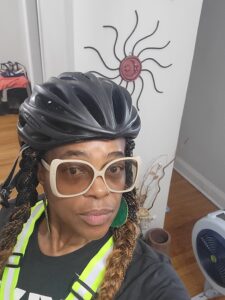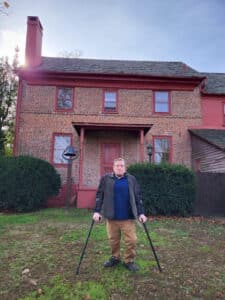By Cyndi Steiner and Matthew Meisel
Bike lanes have been shown to increase the safety for all road users due to their traffic calming effects: fewer car-car crashes, fewer car-pedestrian crashes, and fewer car-bike crashes. They provide a safe place on the road for bike riders, thereby encouraging more riders, which help reduce the number of cars on the road, easing congestion. All of these benefits ring true for the City of Hoboken, which desperately needs to address the chaos that is Washington Street, the main street through the town’s business district.
But bike lanes —especially protected bike lanes, and bike lanes through commercial districts—contribute to the economic vitality of a community, in at least three specific ways:
- Bike lanes put more people on retailers’ doorsteps
- Bike lanes encourage redevelopment and boost real estate values
- Bike lanes make it easier for commuters to get to work, thereby encouraging businesses to locate in cities and towns that have created bike lane networks
Let’s take a closer look.
Bike lanes put more people on retailers’ doorsteps. In dense cities, and even in not-as-dense suburbs, bicycles are much faster and easier to park than cars. (Think about the last time you circled the block looking for a parking space, or drove up and down the parking lot aisles at a supermarket.) In addition, traveling at “bicycle speed” allows bike riders to see and notice more businesses. That coupled with the ease in parking a bike makes it much easier to patronize stores along a road with bike lanes. So, stores at or near bike lanes see more customers. For example:
- In New York City, bicycle volumes rose significantly on streets where protected bike lanes were added. This includes 50% to 150% increases on parts of 1st Ave, 2nd Ave, 9th Ave, Broadway, and Columbus Ave, according to NYCDOT.
- NYCDOT also reported that a half-mile-long stretch of 9th Ave, the nation’s first parking protected bike lane, saw a 49% increase in retail sales after the lane was installed, compared to a 3% increase for all of Manhattan.
- Studies in Portland OR, Toronto, and three cities in New Zealand found that shoppers who travel to a shopping area by bike spend less per visit, but more overall each month.
- Closer to home, New Jersey’s first parking protected bike lane along Mt. Prospect Avenue in Newark has proven to be popular among the businesses; according to Jack Nata, Manager of the city’s Division of Traffic and Signals, the Mt. Prospect Avenue Neighborhood Improvement District (MPANID) is now working with the city to create pop-up bike rentals on Mt Prospect Avenue for the city’s annual Cherry Blossom Festival, and a Parklet on the avenue next spring.
Bike lanes encourage redevelopment and boost real estate values. When it’s easier to get to where you’re going, real-estate values go up. That’s what a collection of studies from across the U.S., published by the San Francisco Bicycle Coalition, says. For example:
- In Washington DC, 83% of residents who live near the 15th Street protected bike lane say that it’s a valuable neighborhood asset.
- In the Minneapolis area, the median home value rises by $510 for each quarter mile nearer to an off-street bike path.
- In Indianapolis, homes near the Monon Trail sell for an average of 11% more than similar homes farther away.
Bike lanes make it easier for commuters to get to work. Thousands of New Jerseyans bike for all or part of their commute…some by choice, and some by necessity. Many new companies, especially ones that are looking to attract younger employees, choose office space that is accessible to many transportation modes. And many people commute by bike because it’s the most economical way for them to travel.
- Americans aged 16-34 take 24% more bike trips than they did a decade ago, according to the USPIRG. Fewer young people today have a driver’s license. The percentage of Americans aged 16-24 with a license peaked in 1983 and has been falling ever since.
- Cycling is a crucial transportation pool for our lowest-income neighbors. Individuals with household incomes of less than $20,000 per year bike for transportation at twice the rate of those who make more than $20,000.
Bike lanes are—and will continue to be—an important piece of our transportation infrastructure. But they’re also an important piece of our economic infrastructure: they help shoppers get to stores and workers get to jobs. When that happens, our local economy ultimately benefits, and so do we. Let’s hope the bike lanes along Washington Street are included in the plan for the corridor, for everyone’s benefit.
Cyndi Steiner is the Executive Director of the NJBWC.
Matthew Meisel is an NJBWC member, avid biker and hiker, and even an occasional walker. A native Pittsburgher, he now lives in Montclair and works in corporate strategy.














































































